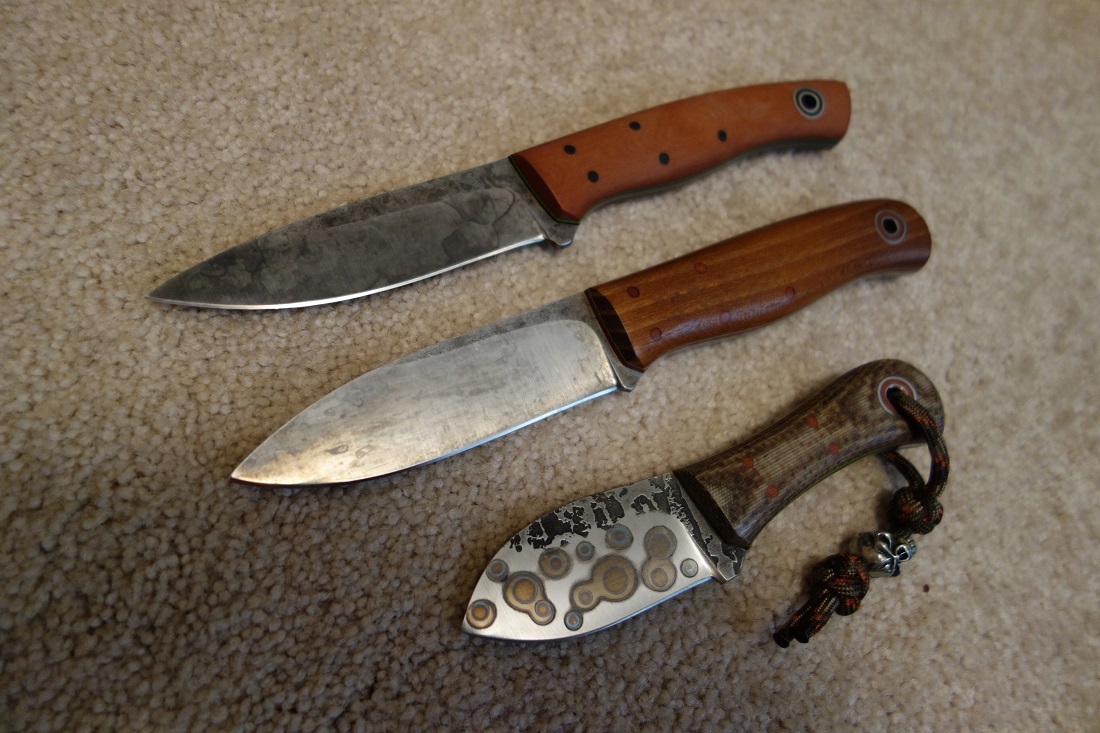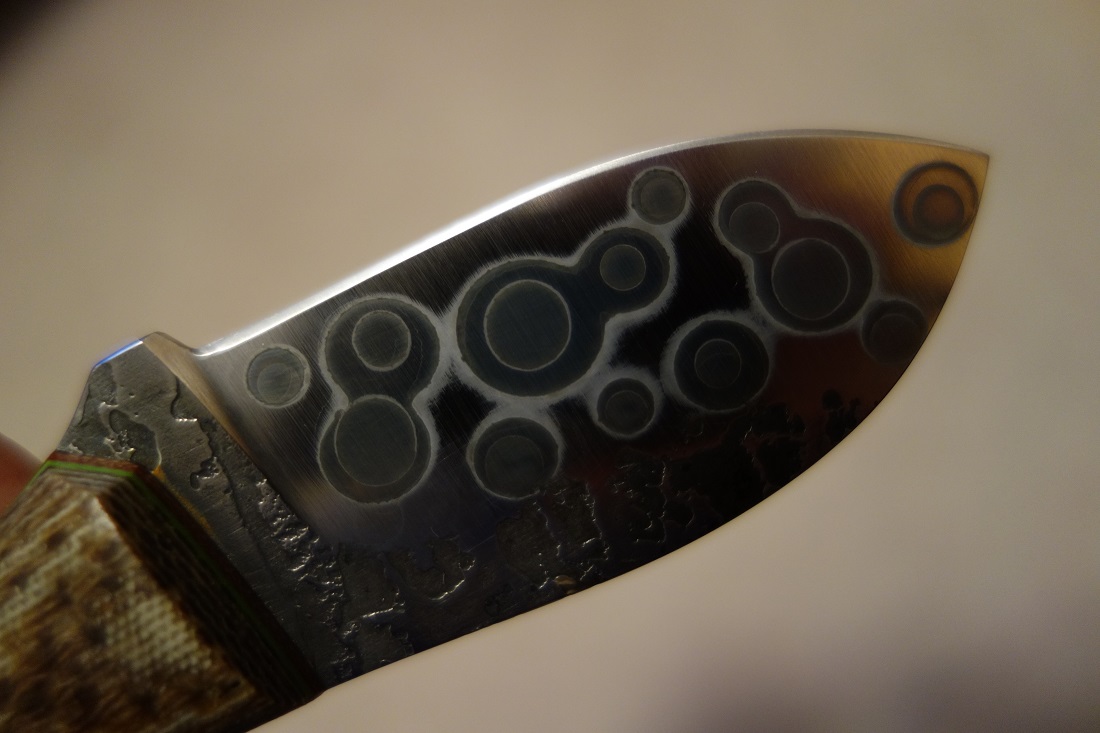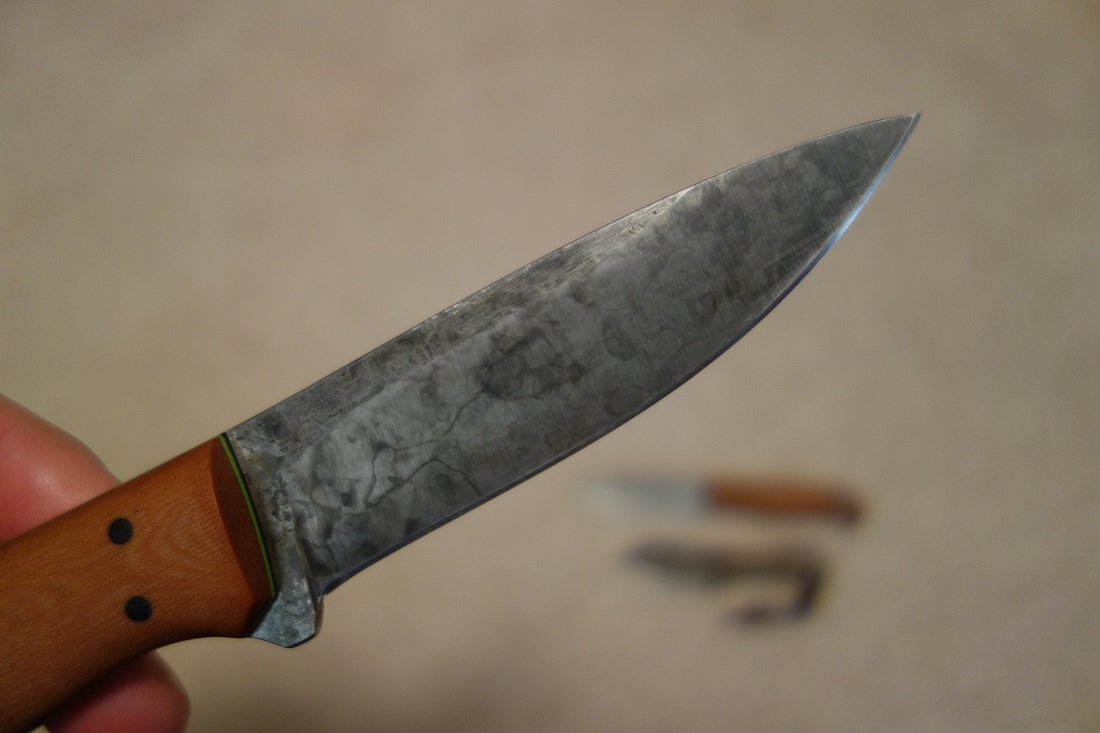schmittie
Gold Member
- Joined
- Nov 28, 2009
- Messages
- 2,971
I realize there are mixed opinions on the subject of patina's on tool steel. Some love them, even force them. Others meticulously care for each knife and hate the idea of anything but a mirror polish on their blades.
To be honest, I've fallen between the two sides. I can't say I've been quick to stain a knife on purpose, but I don't polish them regularly either. Whatever happens, happens.....to a point.
Here is a brief story of my favorite Fiddleback to date. I don't carry it every day, but it's my most often carried Fiddleback. An 1/8" O1 Patch in Shadetree coffee bag burlap. This knife hasn't done it all, but she had done plenty.
She has:
Cut my wife's ID bracelet off her wrist on her final day of chemotherapy (look how new and shiny that blade is!)-
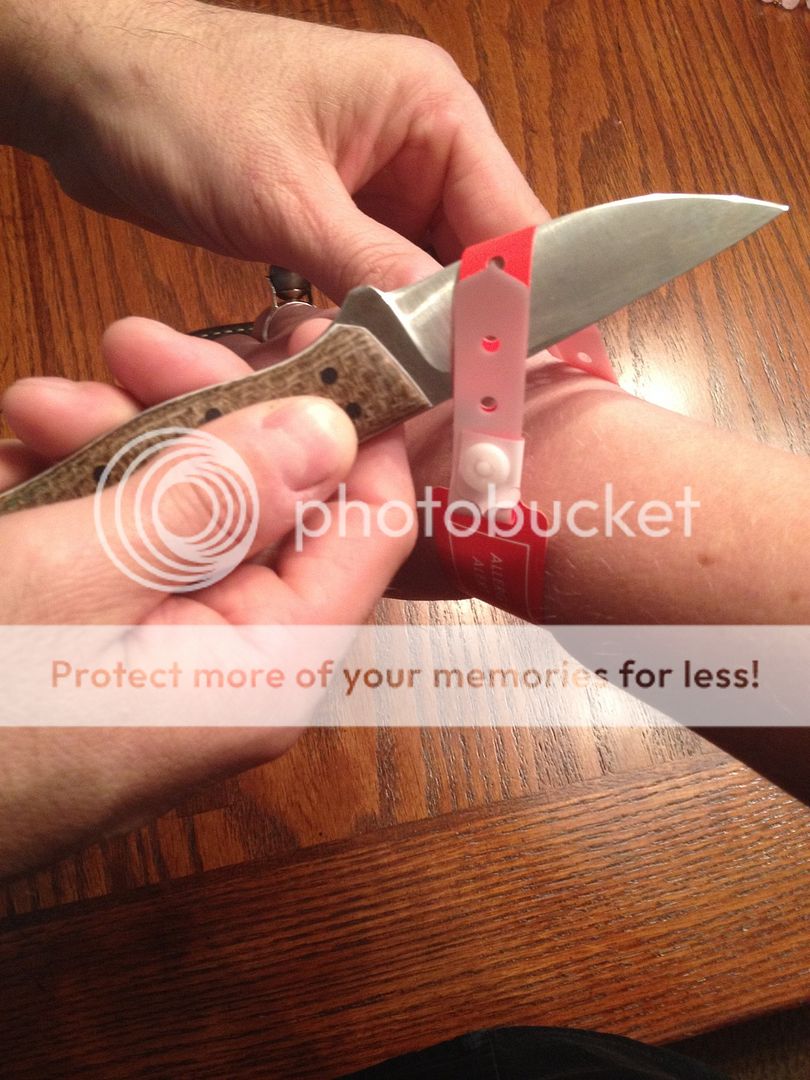
Been there to cut salami and spread cheese on crackers at a local winery-

Even skinned and deboned a deer this past season. There is one on the bottom right and one on the top left of this pic (it was one of these two does. Sorry, no "in progress" pics)-

All of this work took the shine off the blade and left it with an odd tarnish. Kinda streaky and dark towards the tip.
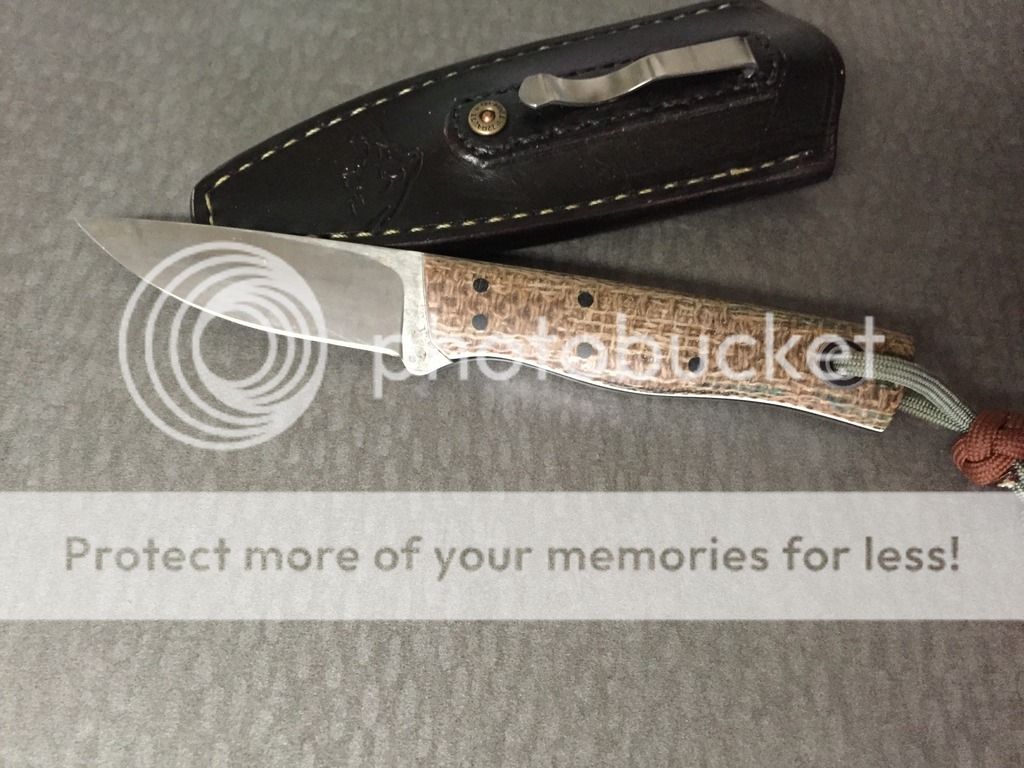
So, for once, I've decided to step out of my comfort zone and force a patina.
There are lots of ways to do it. I actually tried several.
1- soak paper towels in vinegar (I had red wine vinegar on hand) and leave for a time.

Results were- Eh. Ok I guess. But not what I wanted.
Round 2- mustard
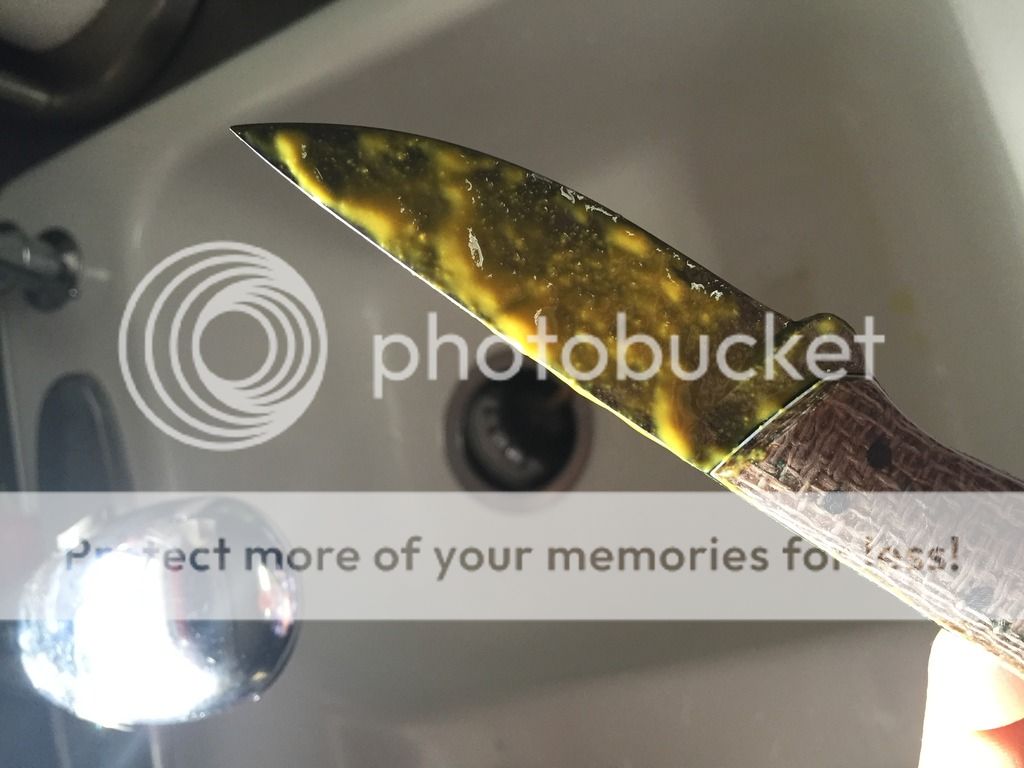
Again. Results were- Eh. Boring really. These two methods left it spotty, streaky and uninteresting.
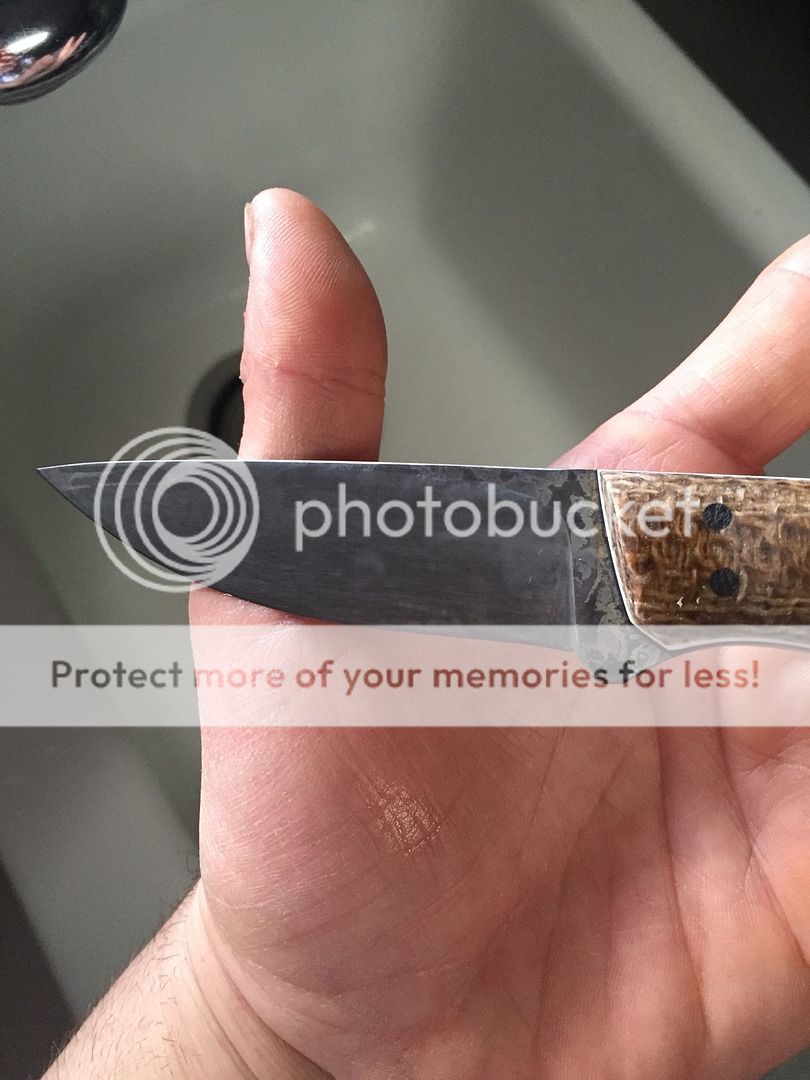
Looking around the kitchen we had some apple juice cocktail of sorts. How about a soak?
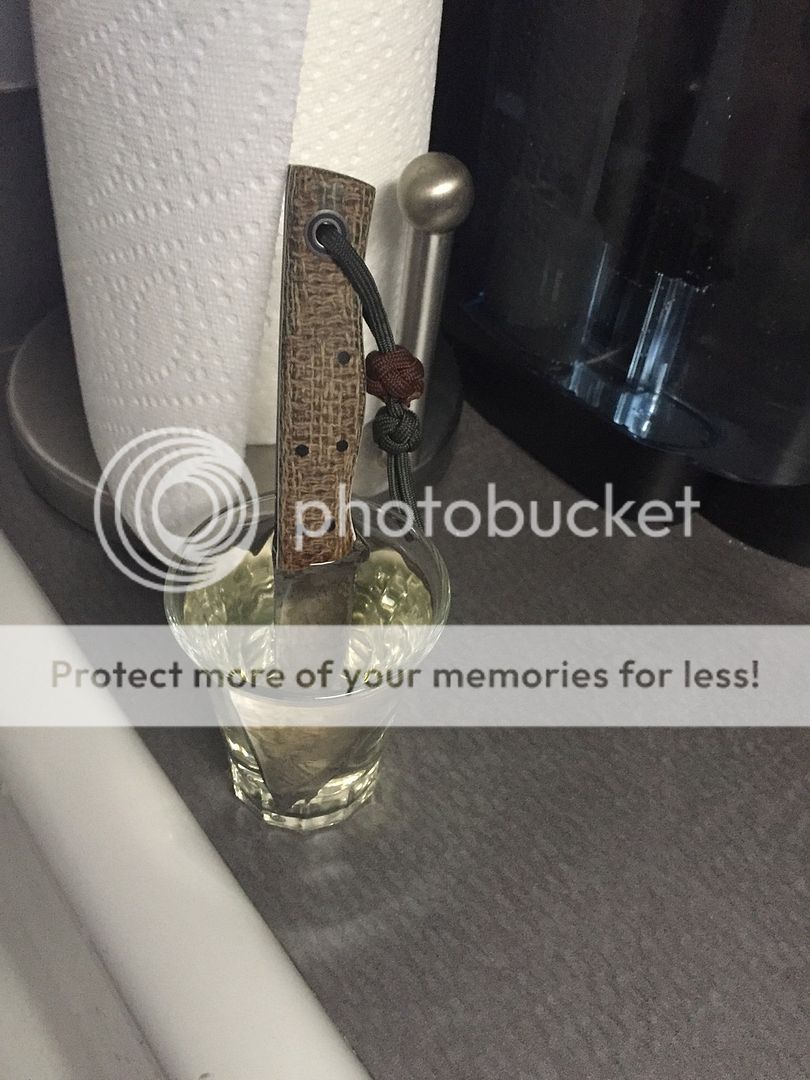
Again = not the results I wanted. I was hoping for a result that would bring a more even, uniform dull gray. Not streaky, spotty and odd. After all, it would do that with time anyway.
Then I remembered reading that many have had good success with a plain old warm white vinegar soak. (No pics. Looks the same as above)
Why didn't I do this first?? It was just what I hoped for! A flat gray.
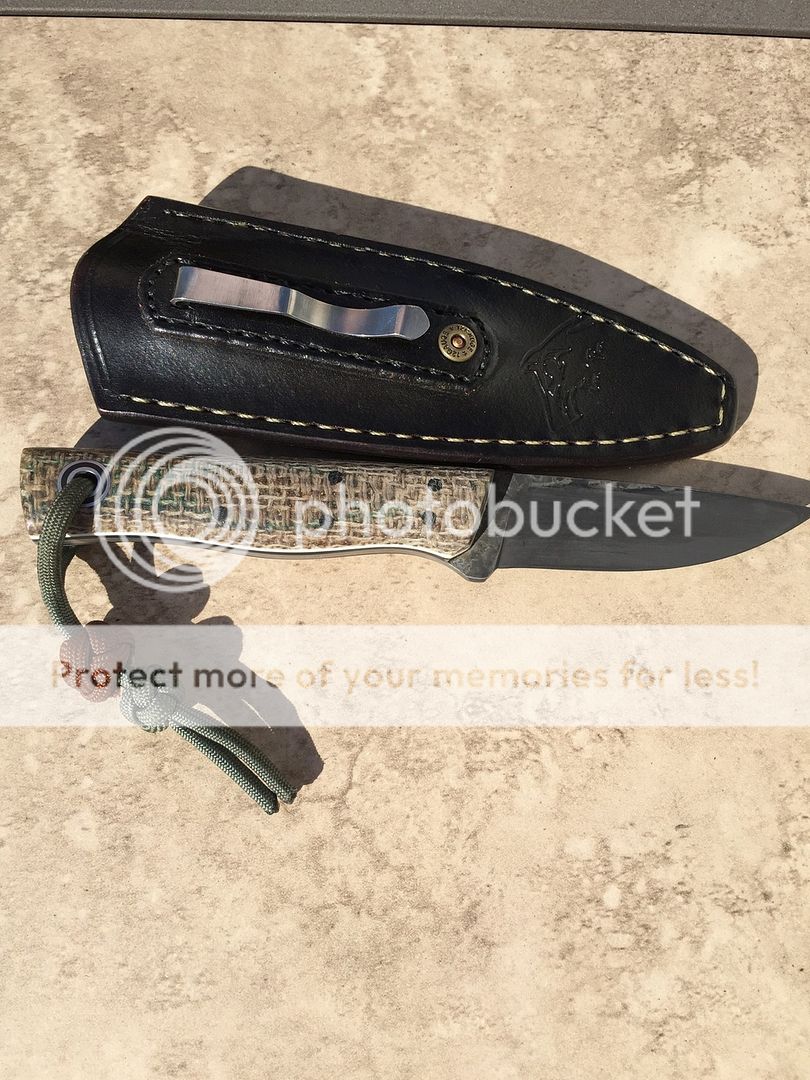
After stropping the edge back-
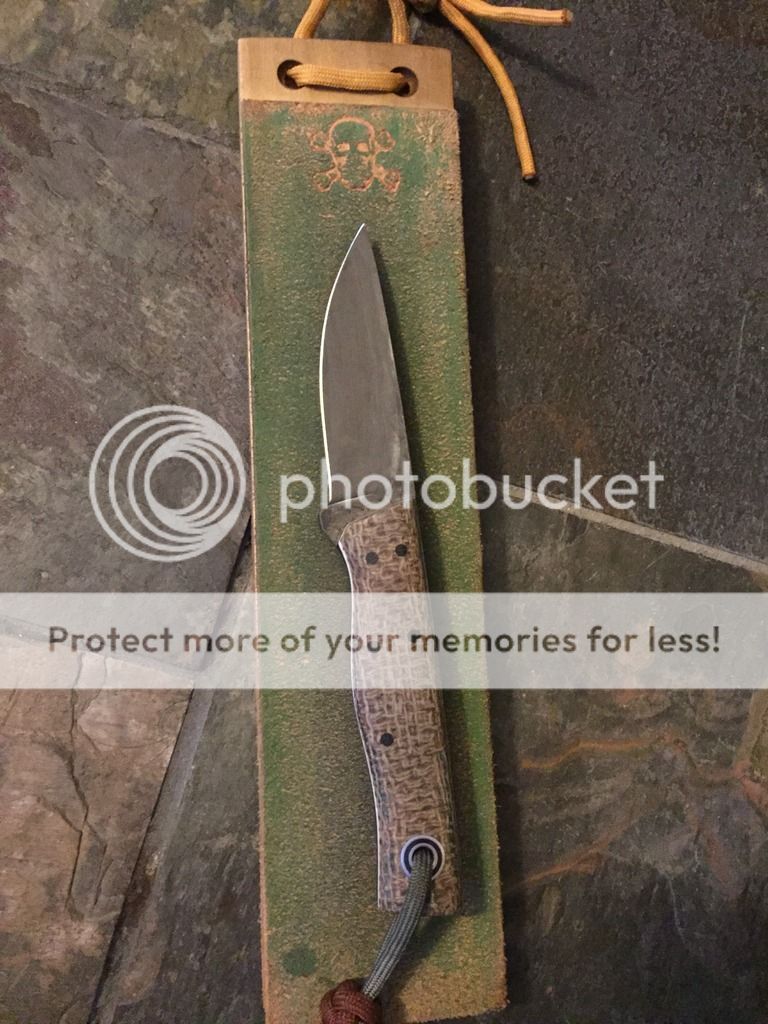
Long story short- I'm happy and got what I wanted. This knife and I will be together for a long time. After step 1 above, she will hold a special and sentimental spot in our home. And she is a great little workhorse.
If you have a Fiddleback with a forced or natural patina, post it up!!
To be honest, I've fallen between the two sides. I can't say I've been quick to stain a knife on purpose, but I don't polish them regularly either. Whatever happens, happens.....to a point.
Here is a brief story of my favorite Fiddleback to date. I don't carry it every day, but it's my most often carried Fiddleback. An 1/8" O1 Patch in Shadetree coffee bag burlap. This knife hasn't done it all, but she had done plenty.
She has:
Cut my wife's ID bracelet off her wrist on her final day of chemotherapy (look how new and shiny that blade is!)-

Been there to cut salami and spread cheese on crackers at a local winery-

Even skinned and deboned a deer this past season. There is one on the bottom right and one on the top left of this pic (it was one of these two does. Sorry, no "in progress" pics)-

All of this work took the shine off the blade and left it with an odd tarnish. Kinda streaky and dark towards the tip.

So, for once, I've decided to step out of my comfort zone and force a patina.
There are lots of ways to do it. I actually tried several.
1- soak paper towels in vinegar (I had red wine vinegar on hand) and leave for a time.

Results were- Eh. Ok I guess. But not what I wanted.
Round 2- mustard

Again. Results were- Eh. Boring really. These two methods left it spotty, streaky and uninteresting.

Looking around the kitchen we had some apple juice cocktail of sorts. How about a soak?

Again = not the results I wanted. I was hoping for a result that would bring a more even, uniform dull gray. Not streaky, spotty and odd. After all, it would do that with time anyway.
Then I remembered reading that many have had good success with a plain old warm white vinegar soak. (No pics. Looks the same as above)
Why didn't I do this first?? It was just what I hoped for! A flat gray.

After stropping the edge back-

Long story short- I'm happy and got what I wanted. This knife and I will be together for a long time. After step 1 above, she will hold a special and sentimental spot in our home. And she is a great little workhorse.
If you have a Fiddleback with a forced or natural patina, post it up!!
Last edited:










